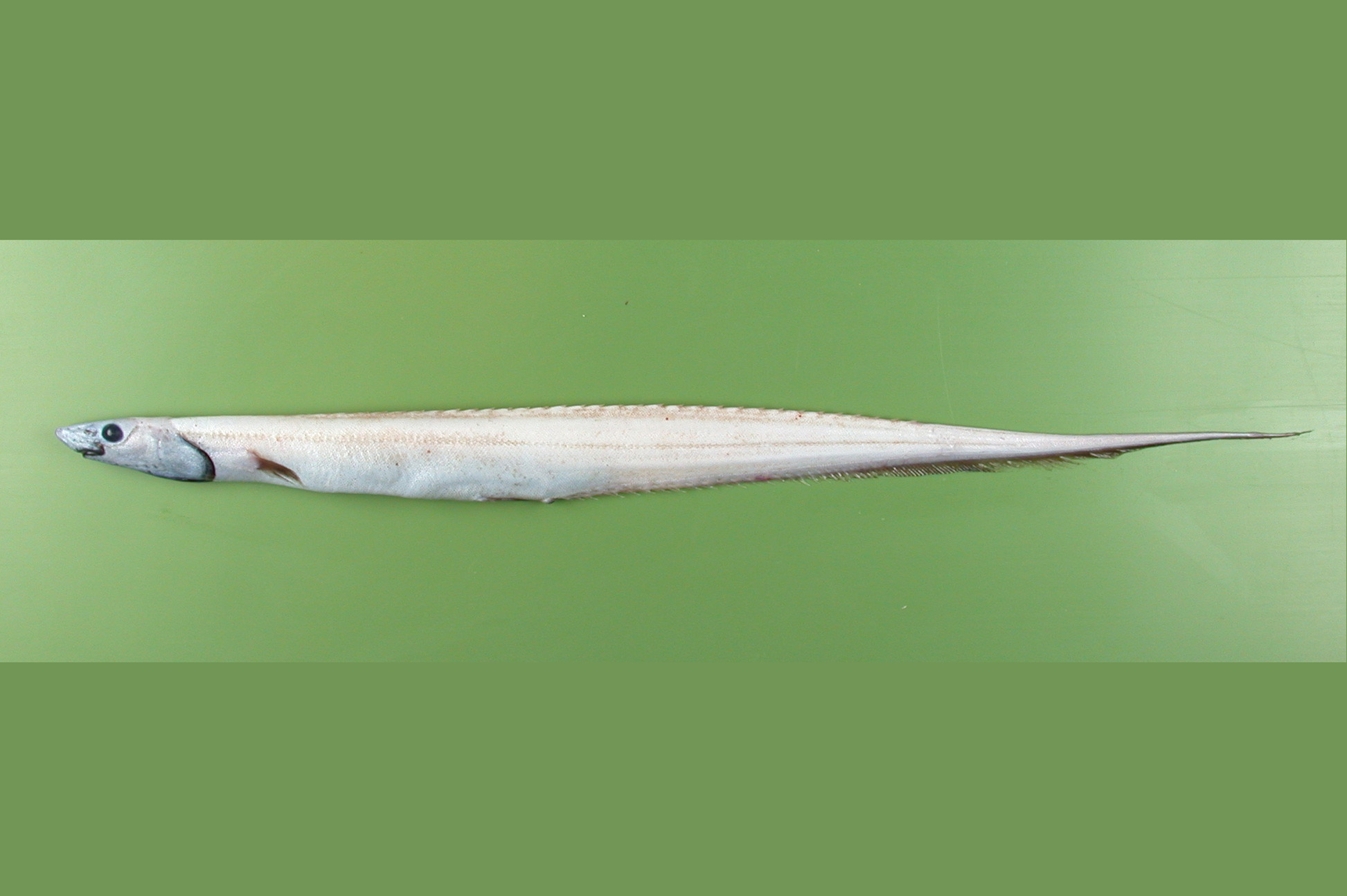Longnose Tapirfish, Polyacanthonotus challengeri (Vaillant 1888)

Longnose Tapirfish, Polyacanthonotus challengeri. Source: Alexei Orlov / FishBase. License: All rights reserved
Summary:
A cream to faintly pink spiny eel, possibly with pale brown markings, a black margin on the rear of the anal and caudal fins, the rear edge of the gill cover, the lining of mouth and gill chamber, and parts of the peritoneum.
Cite this page as:
Bray, D.J. 2017, Polyacanthonotus challengeri in Fishes of Australia, accessed 01 Jul 2025, https://fishesofaustralia.net.au/home/species/4890
Longnose Tapirfish, Polyacanthonotus challengeri (Vaillant 1888)
More Info
|
Distribution |
Off Sydney, NSW, and the Great Australian Bight, SA; depth approximately 1000-2080 m. |
|
Features |
Dorsal fin spines 32-35; Anal fin 161-162 rays, incl 26-35 spines; Vertebrae 242-244. Caudal fin very small; anal fin long, low, confluent with caudal; pectoral fin with a fleshy base. |
|
Feeding |
Feeds on bottom-living invertebrates, especially amphipod crustaceans, polychaete worms and mysid shrimps. |
|
Species Citation |
Notacanthus challengeri Vaillant 1888, Expéditions scientifiques du Travailleur et du Talisman: 387. Type locality: South of Tokyo, 34°37'N, 140°32'E. |
|
Author |
Bray, D.J. 2017 |
Longnose Tapirfish, Polyacanthonotus challengeri (Vaillant 1888)
References
Gon, O. 1990. Notacanthidae. pp. 100-101. In: Gon, O. & Heemstra, P.C. (eds) 1990. Fishes of the Southern Ocean. Grahamstown : J.L.B. Smith Institute of Ichthyology 462 pp.
Haedrich, R.L. & Merrett, N.R. 1988. Summary atlas of deep-living demersal fishes in the North Atlantic Basin. Journal of Natural History 22: 1325-1362.
McCosker, J. 2015. Polyacanthonotus challengeri. The IUCN Red List of Threatened Species 2015: e.T190403A1950722. http://dx.doi.org/10.2305/IUCN.UK.2015-4.RLTS.T190403A1950722.en. Downloaded on 11 April 2017.
Moser, H.G. & Charter, S.R. 1996. Notacanthidae: spinyeels. pp. 82-85. In H.G. Moser (ed.) The early stages of fishes in the California Current Region. California Cooperative Oceanic Fisheries Investigations (CalCOFI) Atlas No. 33. 1505 pp.
Shcherbachev, Y.N. 1987. Preliminary list of thalassobathyal fishes of the tropical and subtropical waters of the Indian Ocean. Journal of Ichthyology 27(2): 37-46.
Shinohara, G., Endo, H. & Matsuura, K. 1996. Deep-water fishes collected from the Pacific Coast of Northern Honshu, Japan. Memoirs of the National Science Museum, Tokyo (29): 153-185.
Stewart, A.L. & Struthers, C.D. 2015. 36 Family Notacanthidae (pp. 210-217) in: Roberts, C.D., Stewart, A.L. & Struthers, C.D. 2015. The Fishes of New Zealand. Wellington : Te Papa Press Vol. 2 pp. 1-576.
Sulak, K.J. 1986. Notacanthidae. pp. 599-603. In: Whitehead, P.J.P., Bauchot, M.-L., Hureau, J.-C. & Tortonese, E. (eds) Fishes of the North-eastern Atlantic and the Mediterranean. Paris : UNESCO Vol. 2 pp. 517-1007.
Vaillant, L.L. 1888. Expéditions Scientifiques du Travailleur et du Talisman pendant les années 1880, 1881, 1882, 1883. Paris : G. Masson 406 pp. 28 pls.


